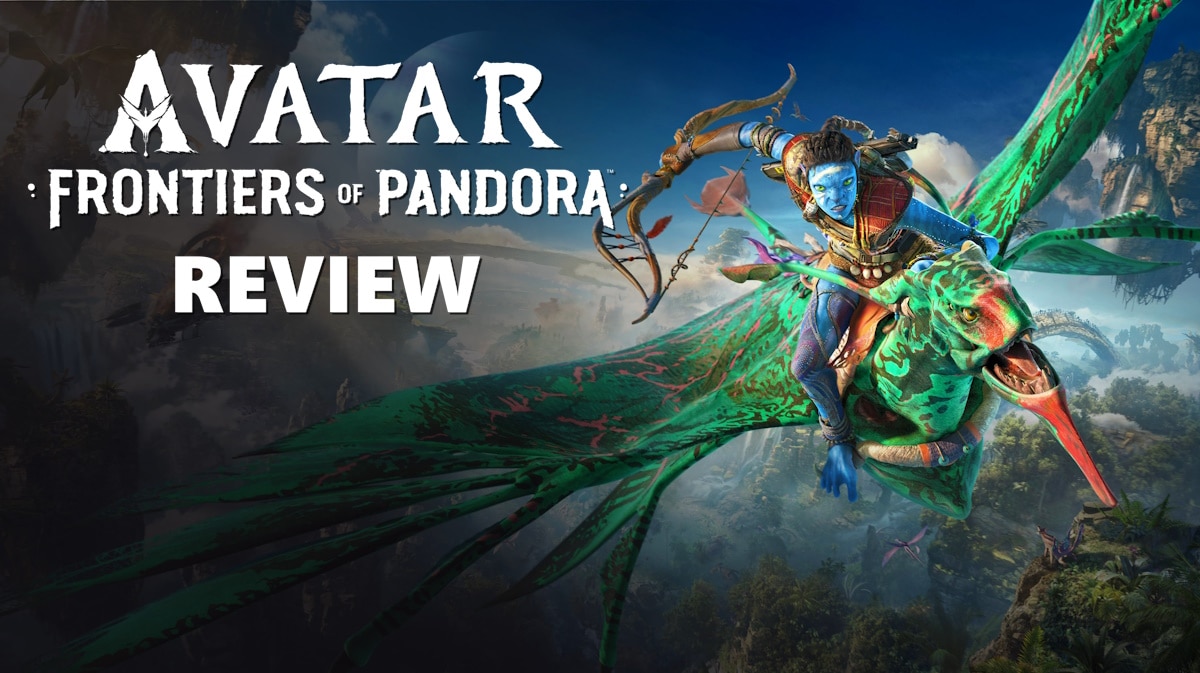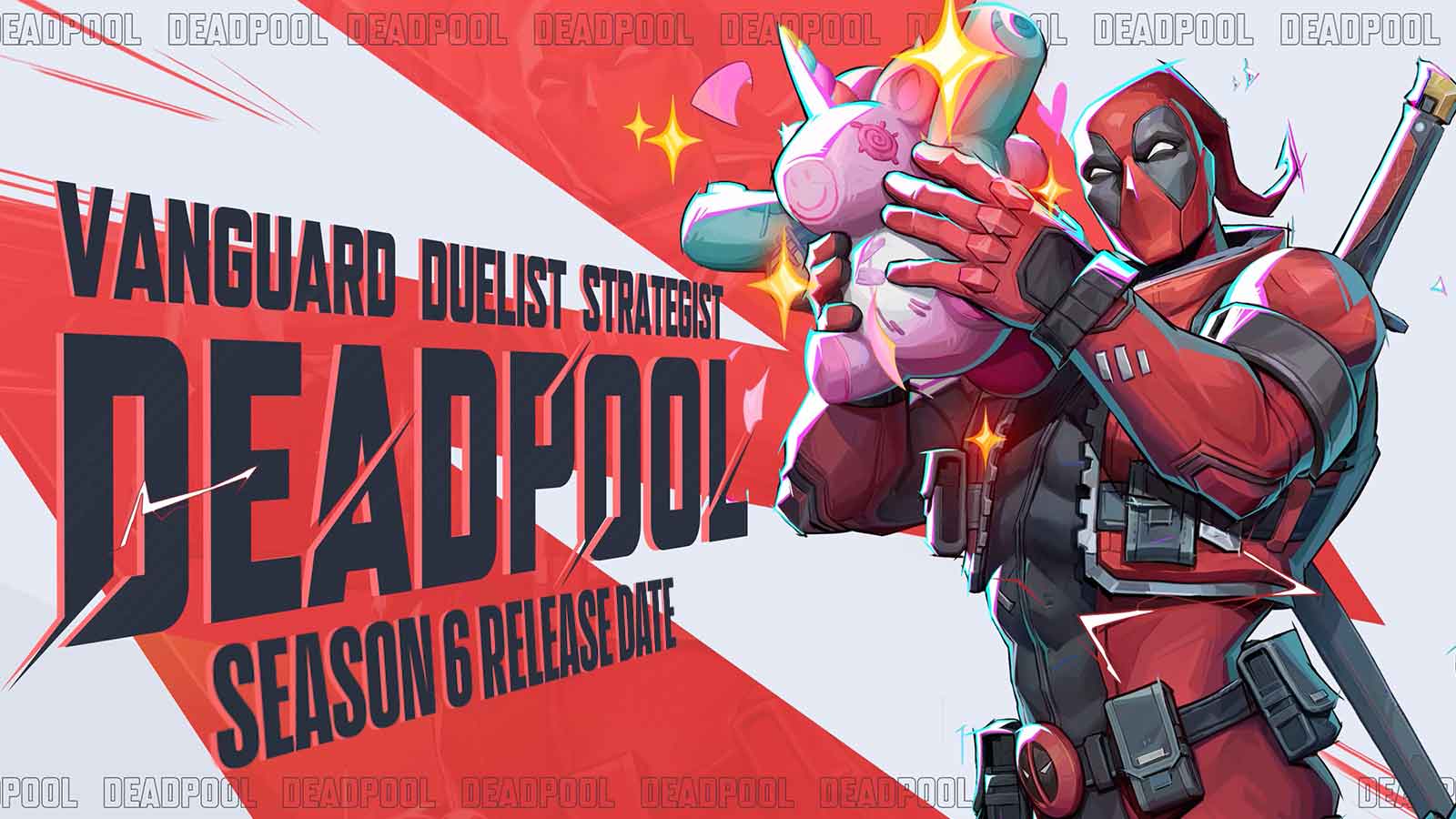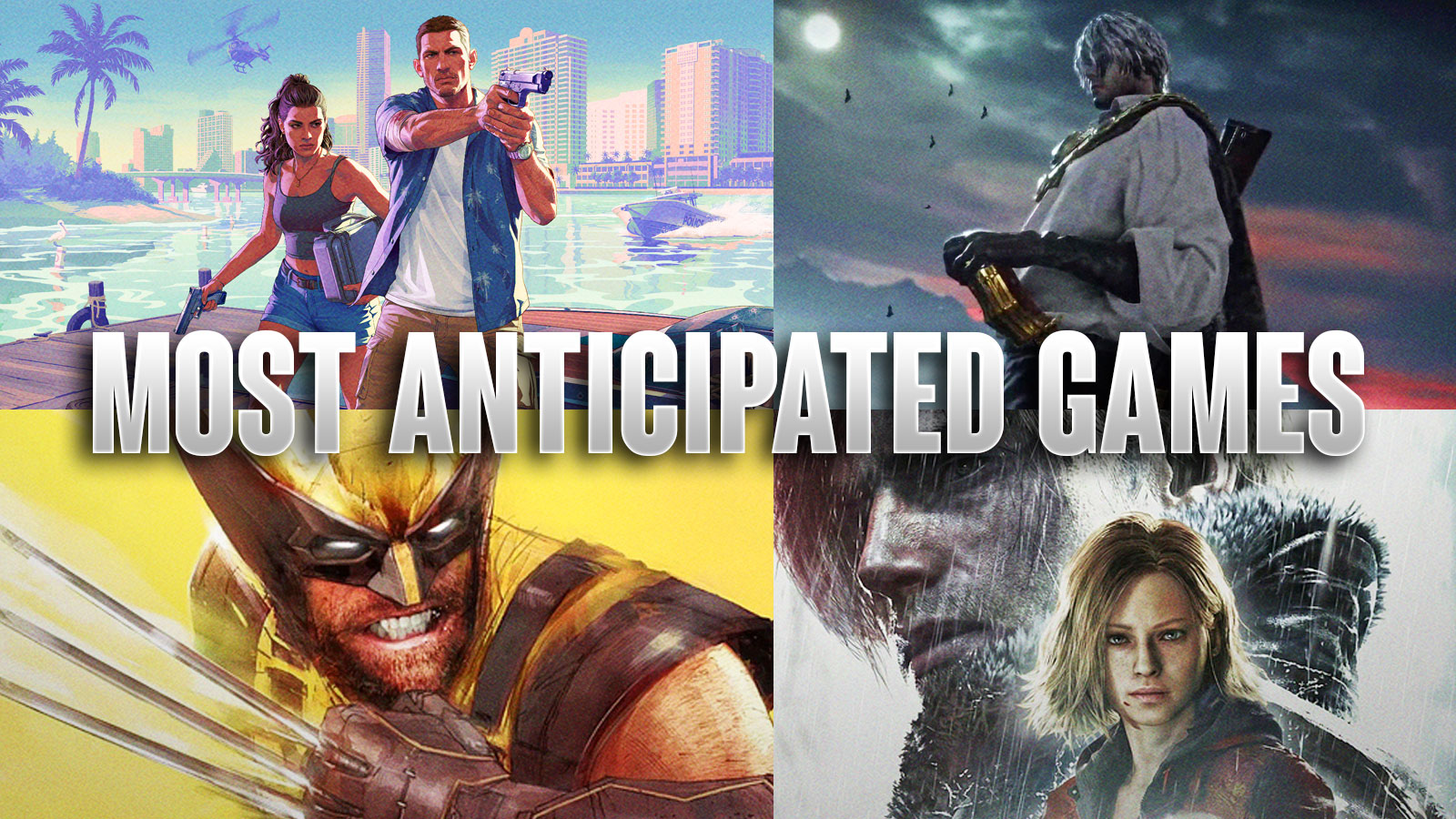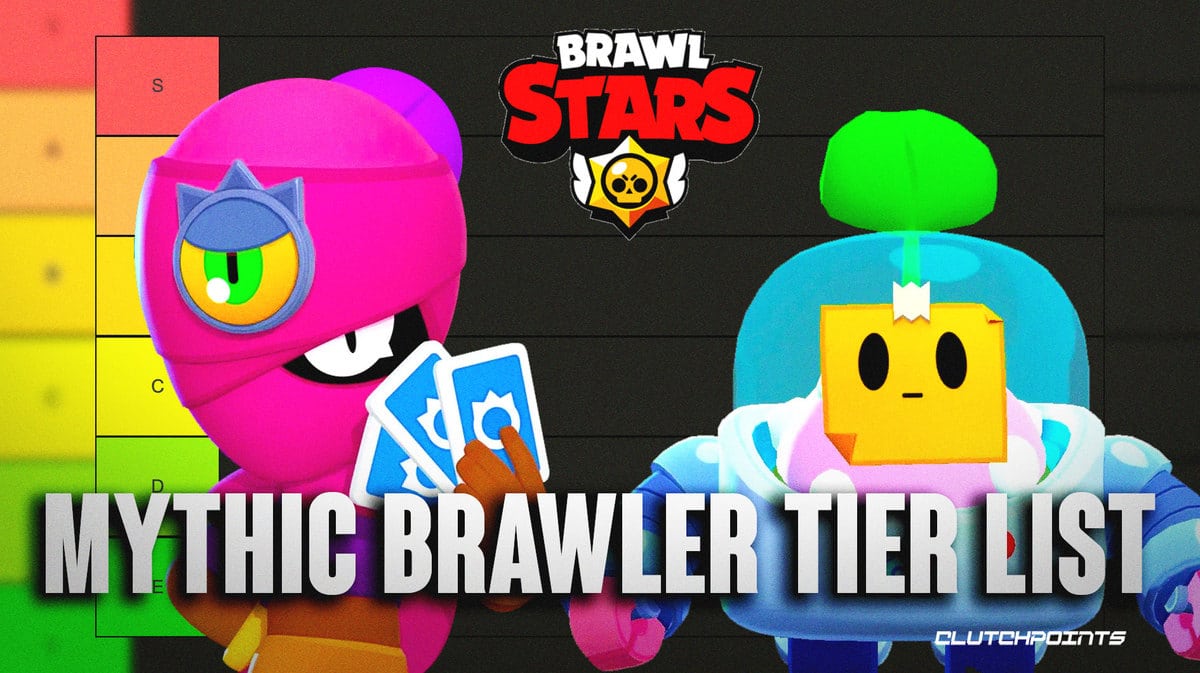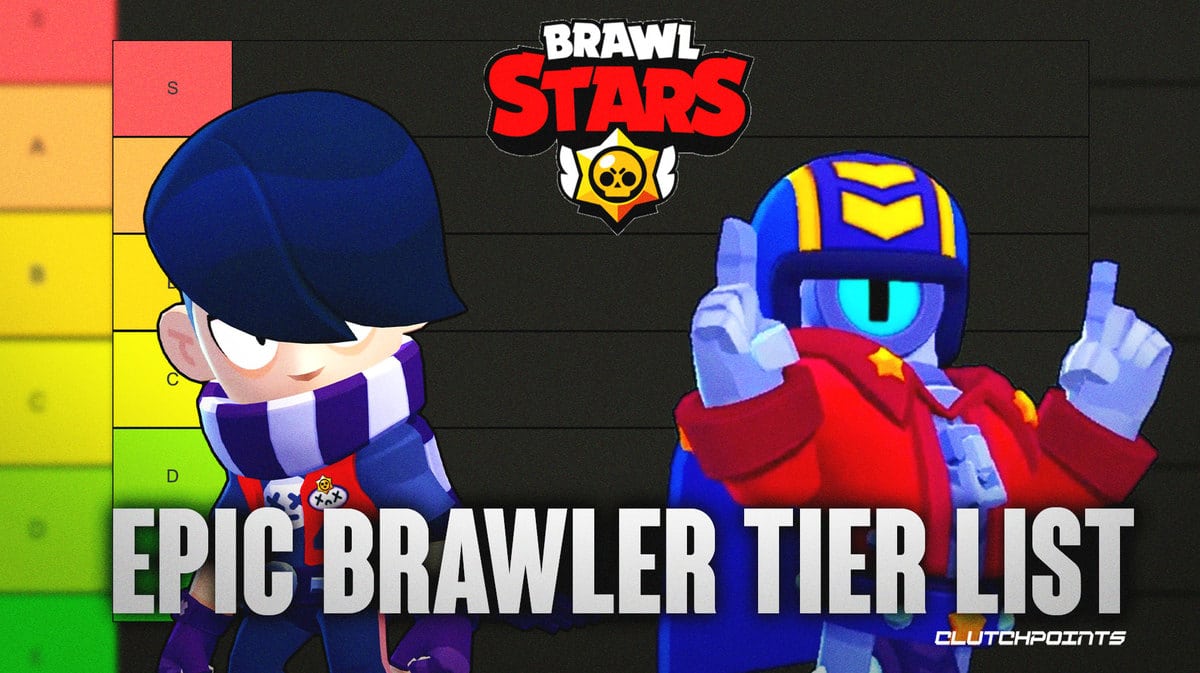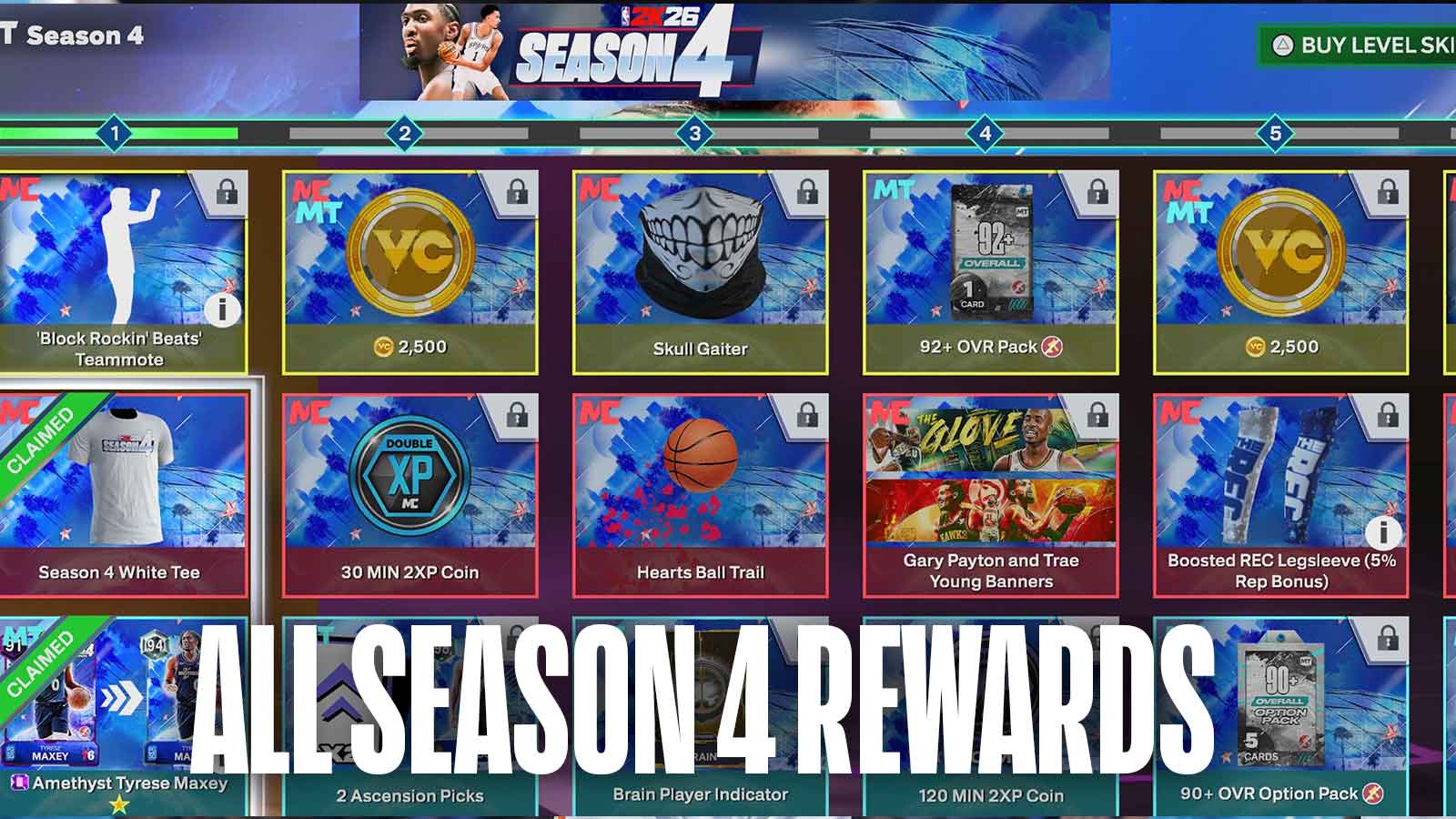Playing an Avatar game (the blue people, not the four elements one) was not on my to-do list this year. However, now that I have played it, it's a pretty decent experience and fun overall. If you're wondering if the game is worth trying, you're in luck. In this review, we will be talking about Avatar: Frontiers of Pandora, its gameplay, story, as well as our score for the game overall.
Avatar: Frontiers of Pandora Review
Avatar: Frontiers of Pandora has a release date of December 7, 2023. It will be available on PlayStation 5, Xbox Series X|S, and PC. We wrote a preview for the game a few months back, so if you want a quick read on what to expect from the game before reading our full review, then head over there to give it a read. Then, come back here to read about our thoughts about the full game.
Avatar: Frontiers of Pandora Background
Avatar: Frontiers of Pandora is an open-world game with role-playing and first-person shooter elements. Players take control of one of the game's Na'vi as they explore the Frontiers of Pandora. Players can roam the game world freely, gathering materials to craft and cook with, or taking out the various enemy bases. There is a main storyline, but players can put it off to do their own thing. It's your usual open-world experience. Of course, this game has a lot more to offer. I will be diving into the things that make Avatar: Frontiers of Pandora fun to play, starting with its gameplay elements, and later its story.
Avatar: Frontiers of Pandora Gameplay
As mentioned above, this game is an open-world game with role-playing and first-person shooter elements. I will be going through each one in turn during this review of the gameplay, going through its strengths and weaknesses. Let's start with the game's open-world side.
If I had to describe the game's open world, only one world pops to mind: beautiful. While playing the game, from the beginning until the end, I always found myself admiring the game's scenery. I've played my fair share of open-world games. I'm no stranger to the vast open worlds of Skyrim, Fallout, Final Fantasy XVI, and more. However, dare I say it, Avatar's scenery may just be one of the best, if not the best, that I have seen in a game this year. Maybe it's because the game happens on an alien planet, with a world filled with plants and animals that I will never find on Earth. Maybe it's because the game world is so colorful compared to the boring colors I find myself looking at in my everyday life. Whatever the reason is, the game's open world is just so beautiful.
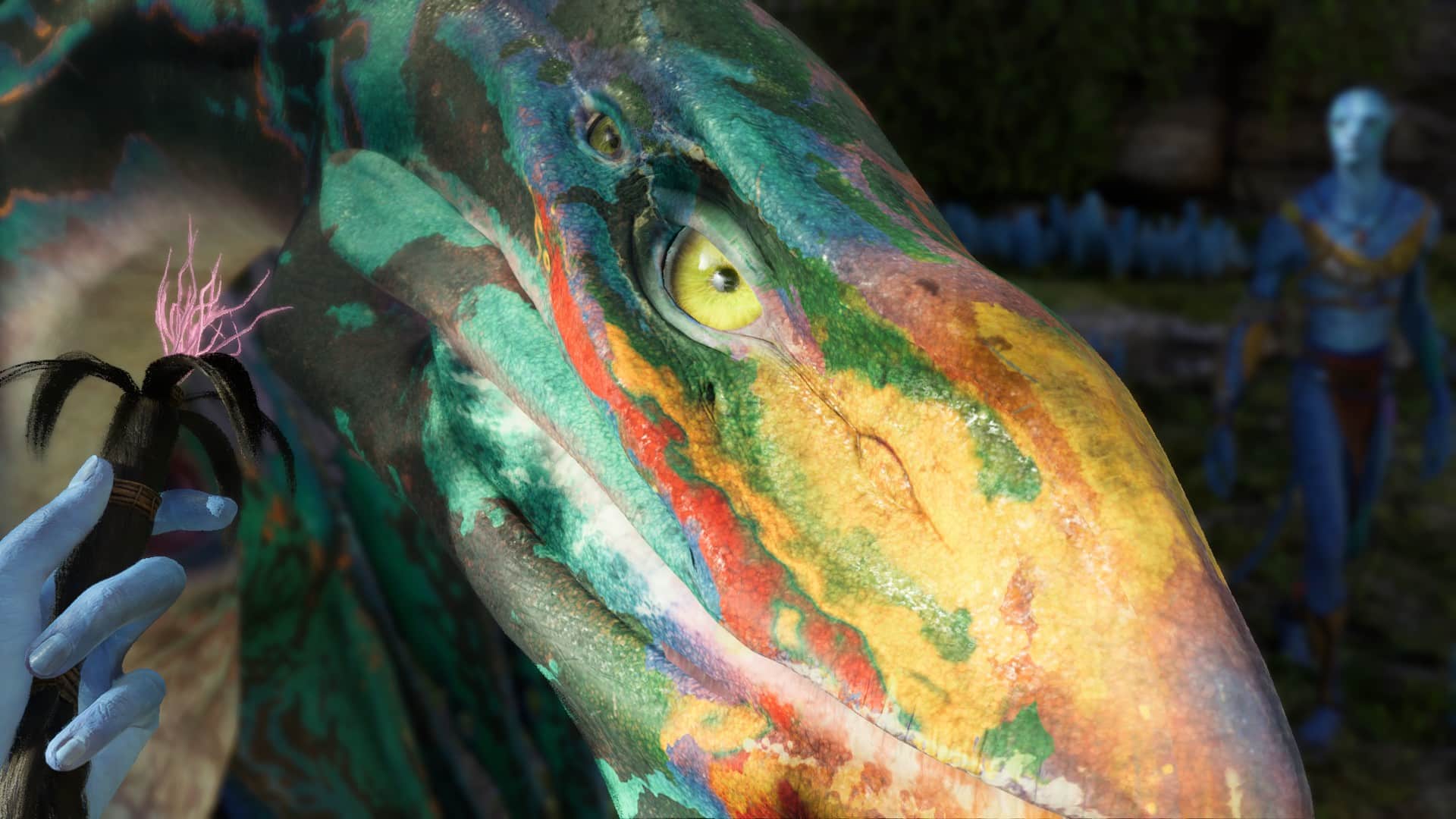
What I love the most about the game in terms of the open world exploration is the ability to fly. During the early parts of the game, players will bond with an Ikran, the flying monsters that were present in the movies. Once you have bonded with an Ikran, you can call them at any time during the game. What I love is that you don't even have to be on the ground to summon your Ikran. The thing I love doing the most in this game is jumping off of a high place, and calling my Ikran to catch me. Flying around on an Ikran is one of the most memorable moments in the game, and the happiness I get from flying did not diminish at all throughout my playthrough.
Next, let's take a look at the game's role-playing aspects, starting with the character creation. This is perhaps one of the weakest parts of the game, even if it is admittedly just a small part of it. The choices for customization are very limited, from the face to the hair and markings. Of course, this is understandable. After all, you're not really playing as a human, but as Na'vi. You do unlock other hairstyles and markings down the line, but it's still a bit lacking in my opinion. The game does allow you to choose your character's voice regardless of their body type. Players can select between a feminine voice, a masculine one, or a gender-neutral one. This is something that games have been doing a lot recently and is a nice touch for the game.
After character creation comes the game's quest mechanics. As a role-playing game, and an open-world one at that, players can take their time in terms of the main quest line. There are various side-quests that you can accept while exploring the game's open world, and you can prioritize doing those first. For instance, during the game's opening hours, after I was able to make friends with one of the game's tribes, I was asked to return to the main resistance base. Instead of doing that, I spent at least ten or so collective hours just doing all of the side quests I could find in the area. When I ran out, that was the only time I went back to the resistance base. The game does, however, lock you out of some side quests, especially if there's a main story quest you have to finish first.
One particular thing I like about how the game handles quests is in the quest objectives. The game does not have a strict quest marker on the compass, although it does mark it on your map. It instead tells you the general direction of the quest, as well as a description of what you are looking for. For example, one particular quest asked me to look for a certain person. Instead of telling me that person's exact location (complete with distance) like other open-world games, it instead describes where they are located. It can be as specific as “they were last seen on the beach of this location” or as vague as “they are not able to see the camp at their current location.” This incentivizes players to actually decipher the actual quest location
Other than questing, players can also run around the world gathering materials and hunting animals to craft equipment and cook food. Crafting and cooking are vital parts of the game and must not be neglected. Crafting equipment allows you to power-up your Na'vi, giving them increased HP, defense, damage buffs, and more. Cooking allows you to prepare meals that will give you various buffs as well, while also keeping your energy full. If you have energy, your character will regenerate health when hurt and out of combat. As such, it is important to always have food on you.
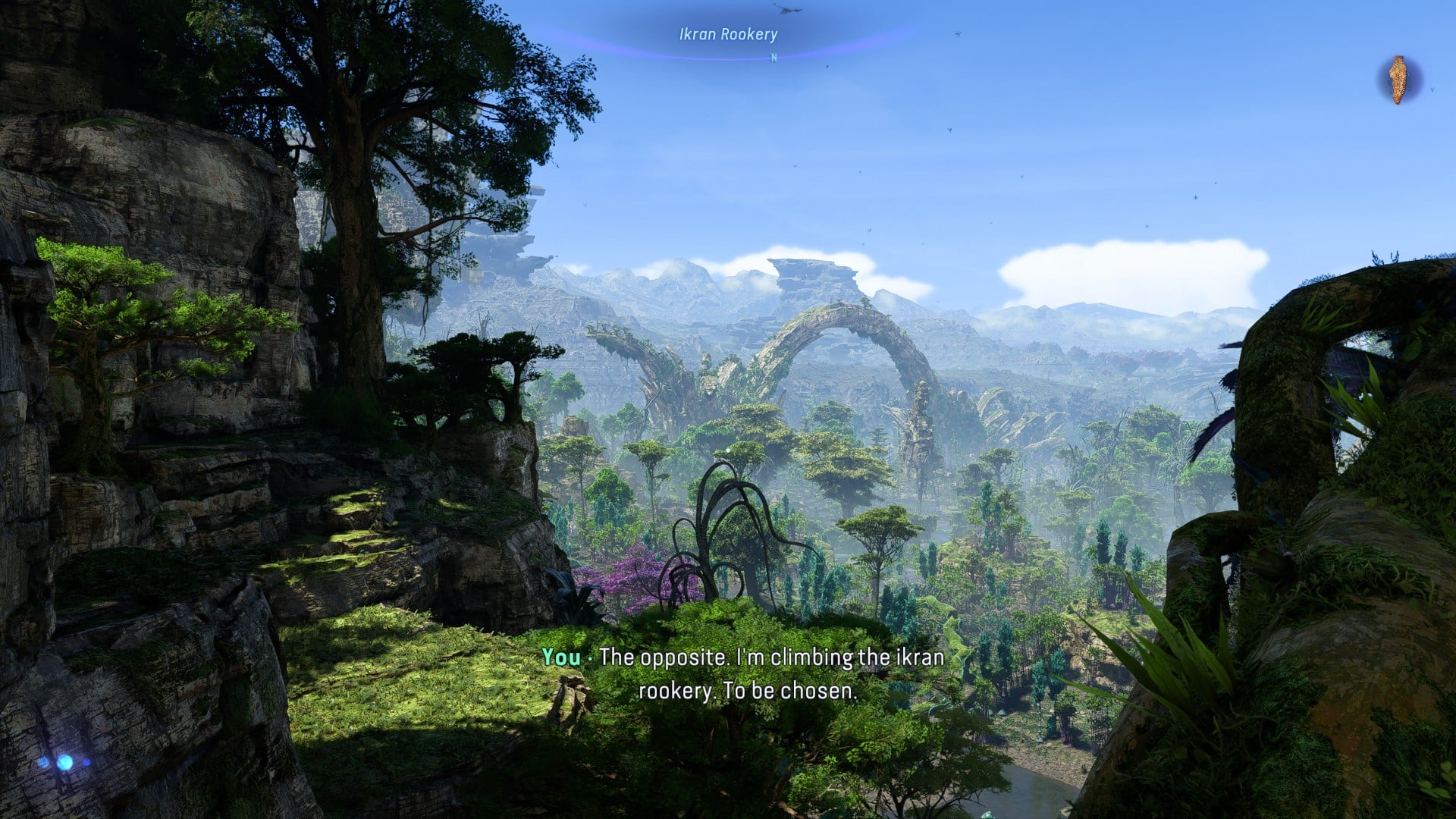
I personally like the crafting and cooking mechanics of this game because it is very straightforward. You have a recipe that normally consists of two material types, and you must provide materials that match those types. There is no set material for crafting. For example, armor might require you to provide Bark and Animal Hide. As long as you have an item that the game considers as Bark and an item that the game considers Animal Hide, you will be able to craft the item. Of course, the higher the quality of the materials, the better the quality of the resulting item. This is the same with cooking. As long as you meet the ingredient type requirements, you will be able to cook the food.
This is where one of my first qualms with the game comes in. Gathering is an important part of the game, so much so that you have a Hunter's Journal dedicated to teaching about where you can gather whatever material you might need. What the game does not do, however, is actually teach you what the gathering points look like.
When I was trying to craft a bow, one of the items I had to look for was a Branch. The most abundant Branch in my area was this alien bamboo, so I looked at my journal to see what it looked like. I approached the Bamboo plant that was near me, and no matter how much I looked around, I couldn't find any gatherable spots. It wasn't until I was beside the fifth Bamboo plant that I realized that the gathering spots were the small, young versions of the plant, not the fully grown ones.
This wasn't an isolated experience. When I had to look for a particular kind of bark, I could not, for the life of me, find where exactly I had to go to rip a piece of bark of. When I had to find honey for a quest, I was so confused as to where exactly this honey was located, as even though it showed me the gathering point's general location, it didn't really tell me what the gathering point itself looked like. Some of them were pretty obvious, but others were not. Even when I used my Na'Vi Sense (think of it as the Eagle vision from Assassin's Creed), it only led to more confusion. I've lost count of how much time I wasted just going around looking for gatherable spots.
Other than the confusion with gathering, everything else is pretty well made. Once you get used to the gathering mechanics, you will be able to get all of the materials you need, leading to your character getting stronger and stronger.
Finally, let's go over the game's first-person shooter mechanics. Players have a variety of weapons to choose from in their fight for freedom. They can either use Na'vi weapons such as bows (there are even three kinds of them), spear throwers, and sling staffs. They can also use human weapons, such as an assault rifle, a shotgun, stun grenades, and RPGs, albeit temporarily. Each side has its strengths and weaknesses. Bows require some practice to master, but ammunition for them is very abundant, so you won't run out easily. Firearms, on the other hand, are very powerful. However, ammunition for them is scarce, so you will have to ration them out on the field.
I like this weapon system because it forces players to use different kinds of weapons in their loadout. For example, I personally use the longbow for human targets, the heavy bow for hunting and taking down robot targets, the Shotgun for when I need to take down robots quickly, and the sling staff when I need to be tactical and place traps. Players can switch their loadout around to match their playstyle, or to match what the quest needs.
For example, in one particular quest, I had to defend two objectives from attacks. I normally don't use the sling staff, but thanks to the fact that the map had choke points, I equipped it to take advantage. Additionally, I equipped the assault rifle instead of the shotgun for that mission, as I wanted to be far away from the enemy instead of up close. It's these situations that make the switching of equipment shine bright.
Of course, it's not just the player's loadout that changes, but also their play style. Stealth is highly recommended in the game, especially in the early levels. You are not a soldier, after all. You're closer to a guerilla fighter. Most of the time, you are outnumbered and outgunned. When I didn't understand this yet, I found myself always trying to go loud on missions. This led to game over screens, and starting over from checkpoints. When I started taking stealth into consideration, things became easier. Of course, once I got more powerful equipment, going loud became an option, and I became a menace on the battlefield.
The player's skills also play into effect here when it comes to the game's combat. Players can choose to select skills that will help them be stealthy, or ones that allow them to deal a lot of damage when fighting in open combat. The amount of power that the game gives the player when it comes to character customization is great, and it feels very good when your skills line up to make your job easy.
Overall, Avatar: Frontiers of Pandora's gameplay is very well made. The open-world mechanics, while not innovative, were still pretty well done. The skills, crafting system, and and combat system all work together well to empower the player to do what they want to do, however they may want to do it. Although the gathering system and the combat encounters do take some getting used to, they become more fun once you get used to them.
Of course, Avatar: Frontiers of Pandora does not just have good gameplay mechanics, but also a pretty good story.
Avatar: Frontiers of Pandora Story
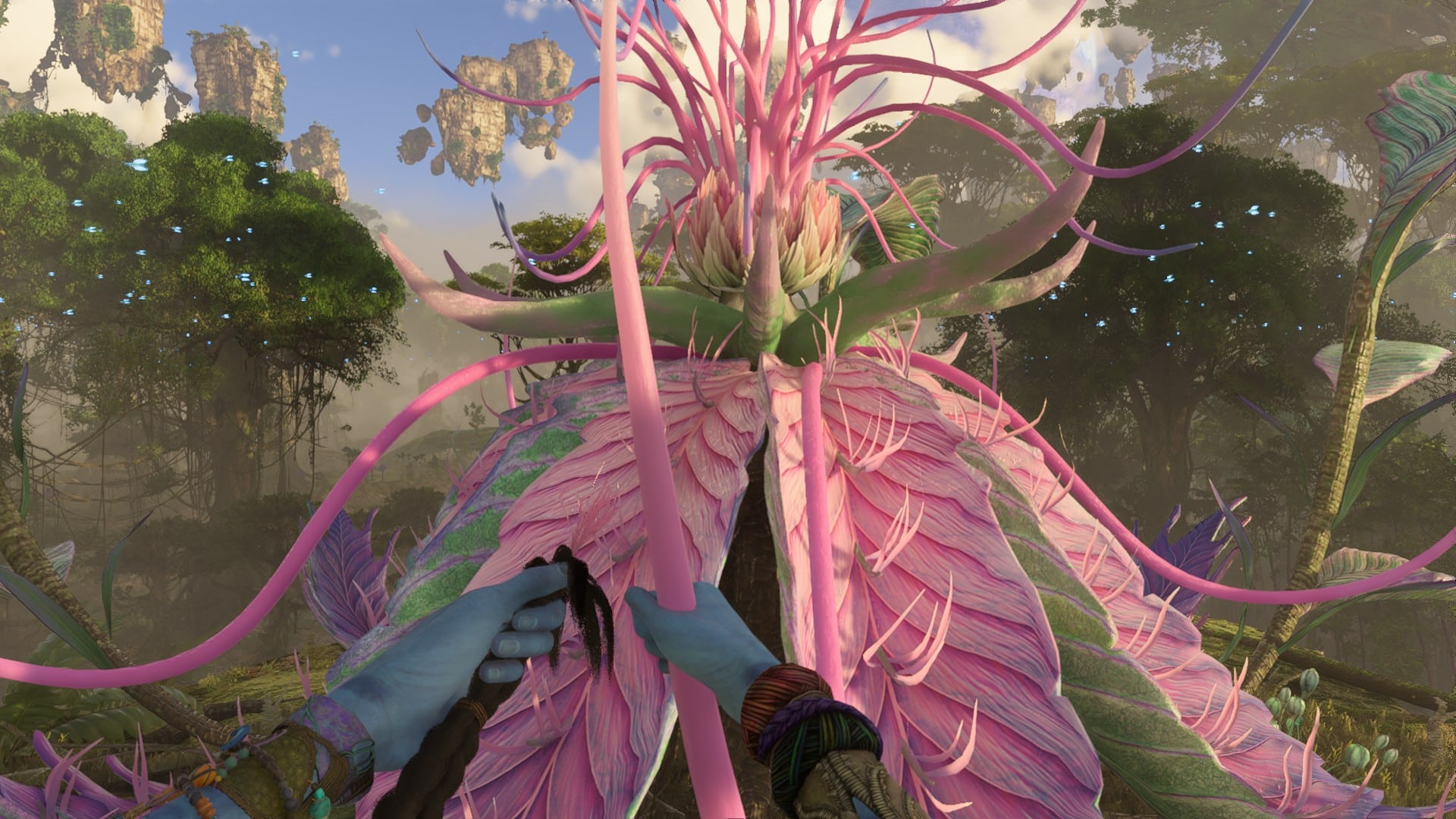
Avatar: Frontiers of Pandora has a very simple story premise. You, alongside some other Na'Vi, were “rescued” by the Resource Development Administration (RDA), the human organization that wants to plunder Pandora of its resources. After you were “orphaned”, the RDA took all of the “rescued” Na'Vis and put them under The Ambassador Program (TAP). TAP aims to train Na'Vi in the ways of humans, allowing them to become a bridge between the RDA and the Na'Vi of the land. Of course, if it wasn't obvious from the quotes in the previous sentences, this is not the real purpose of TAP. In reality, the RDA wants to use the TAP Na'Vi to easily take over the various tribes, giving them access to their resources.
This doesn't happen, of course, as the events of the first movie (yes, they actually do reference Jake Sully in the game's intro) throw the planet into chaos. TAP is shut down, and the Na'Vis under it are put into cryogenic sleep (for reasons that I cannot disclose because it is a pretty important spoiler). Years later, they are thawed, and they discover that the RDA is back with a vengeance. It is up to the recently awoken Na'Vi to fight back against the RDA alongside the Resistance, as well as the other Na'Vi tribes they might meet along the way.
I really like how the story of Avatar: Frontiers of Pandora starts, because you and your character both start at zero. You both do not know what it was like in your previous tribe (your character because they were young, you because, well, you're not a Na'Vi), you both learn what it is like to become a Na'vi, and you both develop a love for the planet you are living in, and tribes that reside in it.
I also really like the variety of characters that you meet along the way, and how their stories are very visible in their character design. Take So'Lek, for example. So'Lek is one of the first Na'Vi warriors that you meet, and looking at his appearance tells you all you need to know. he wears human-made armor with scratches, showing you that he is a seasoned warrior. He also has dog tags around his neck and chest, showing you just how many he has killed. You also see various Na'Vi paraphernalia on him, showing that although he is working with humans and using human equipment to fight, he still shows his Na'Vi heritage.
A lot of the characters in the game tell their stories using their character design, and even the way they talk. Even if you don't know anything about Na'Vi culture, it's very easy to learn how to tell them apart and learn about what their role in their society is. I love it when a game does this, where it doesn't just tell the story using dialogue, but also through visual queues.
It's even more interesting when you're travelling the world, and you run into other Na'Vi in the wilderness. You rarely feel alone in this game, and for good reason. The Na'Vi are a very social race, so running into them in the wild, and having them talk to you and give you items, help in driving that point home. It also helps in making the world feel even more alive. It's not just you and animals in the wild. It's you, your fellow Na'vi, and the world.
The only downside I have with the story is with the cutscenes themselves. Don't get me wrong, I like how they made the cutscenes. It really feels like I'm watching a mini-movie. My problem, however, stems from the fact that whenever I do enter or exit a cutscene, it fades to black. This breaks the flow of the story for me, and after playing games where the gameplay transitions smoothly into story cutscenes, and vice versa, this felt very jarring, to say the least.
Overall, Avatar: Frontiers of Pandora's story is a well-written one. The game does not shy in reminding you what is at stake throughout the story, but it is done in a way that is easy to digest, and fun to listen to. The characters are not one-dimensional, and you can easily see and feel what their motives and personalities are. Be it from how they look, to how they talk, and more, there is always something interesting in the characters that you meet.
Avatar: Frontiers of Pandora Review Summary
To summarize this review, Avatar: Frontiers of Pandora does a great job in both its gameplay and its story. Avatar: Frontiers of Pandora was able to properly combine its many gameplay elements into one cohesive game, while its story is well-written, and doesn't have many boring parts, if any at all. There are some parts that could be fixed, of course, such as the gathering mechanics and the jarring fade to black for cutscenes. There are also some minor bugs that could be fixed. However, if you look past that, Avatar: Frontiers of Pandora has a decent story and gameplay loop that will keep you occupied until completion, and maybe for a rerun or two.
Avatar: Frontiers of Pandora Review Score: 8.5/10
Editor’s Note: ClutchPoints received a PC review copy of Avatar: Frontiers of Pandora to allow us to cover the game. This copy did not, in any way, affect this Avatar: Frontiers of Pandora review’s verdict.

